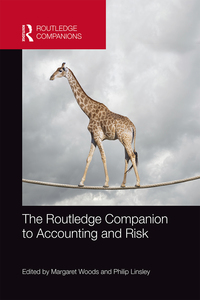Question
Question 1. WDG Limited uses movement based costing to allot variable assembling overhead expenses to items. The organization distinguished three exercises with the accompanying data
Question
1. WDG Limited uses movement based costing to allot variable assembling overhead expenses to items. The organization distinguished three exercises with the accompanying data for last quarter:
Activity Standard Rate Standard Qty per Units produced Actual Costs Actual Quantity
Indirect Materials $20 per kg 0.5 kg per unit $940,000 48,000 kg
Product Testing $3 per test minute 10 mins per unit $2,250,000 740,000 test minutes
Energy $0.20 per minute of machine time 4 minutes of machine time per unit $70,000 360,000 minutes of machine time
The organization delivered 80,000 units in the last quarter. Organization strategy is to explore all changes above 5% of the adaptable spending sum for every movement.
Required
(i) CALCULATE variable overhead use difference and variable overhead effectiveness fluctuation for every one of the exercises utilizing action based costing. Plainly demonstrate every difference as great or ominous/unfriendly.
(ii) INTERPRET the aftereffects of variable overhead effectiveness change as determined in (I) above in regard of roundabout materials and item testing action.
(iii) IDENTIFY the changes that ought to be researched by organization strategy. Show figurings to help your answer.
Answer all the MCQ in proper sequence in reference to managerial accounts:
2. Value shares can't be given with the end goal of:
(A) Cash Receipts
(B) Purchase of resources
(C) Redemption of debentures
(D) Distribution of profit
3. A Company may issue ... .
(A) Equity Shares
(B) Preference Shares
(C) Equity and Preference the two offers
(D) None of the Above
4. An organization can't issue :
(A) Redeemable Equity Shares
(B) Redeemable Preference Shares
(C) Redeemable Debentures
(D) Fully Convertible Debentures
5. To whom profit is given at a fixed rate in an organization?
(A) To value investors
(B) To inclination investors
(C) To debenture holders
(D) To advertisers
6. Inclination investors have
(A) Preferential right as to profit as it were
(B) Preferential right in the administration
(C) Preferential right as to reimbursement of capital at the hour of liquidation of the organization
(D) Preferential right as to profit and reimbursement of capital at the hour of liquidation of the Company
7. The offers on which there is no any pre-fixed pace of profit is chosen, yet the pace of profit is fluctuating each year as per the accessibility of benefits, such offer are called :
(A) Equity Share
(B) Non-combined inclination share
(C) Non-convertible inclination share
(D) Non-ensured inclination share
8. Inclination shares, in the event that the holders of these reserve an option to change over their inclination shares into value shares at their choice as per the terms of issue, such offers are called :
(A) Cumulative Preference Share
(B) Non-total Preference Share
(C) Convertible Preference Share
(D) Non-convertible Preference Share
9. An inclination share which doesn't convey the privilege of partaking in excess benefits is called ...
(A) Non-Cumulative Preference Share
(B) Non-taking an interest Preference Share
(C) Irredeemable Preference Share
(D) Non-convertible Preference Share
10. Which investors reserve a privilege to get the unfulfilled obligations of profit from future benefits :
(A) Redeemable Preference Shares
(B) Participating Preference Shares
(C) Cumulative Preference Shares
(D) Non-Cumulative Preference Shares
11. Which investors are restored their capital after some predefined time :
(A) Redeemable Preference Shares
(B) Irredeemable Preference Shares
(C) Cumulative Preference Shares
(D) Participating Preference Shares
Step by Step Solution
There are 3 Steps involved in it
Step: 1

Get Instant Access to Expert-Tailored Solutions
See step-by-step solutions with expert insights and AI powered tools for academic success
Step: 2

Step: 3

Ace Your Homework with AI
Get the answers you need in no time with our AI-driven, step-by-step assistance
Get Started


